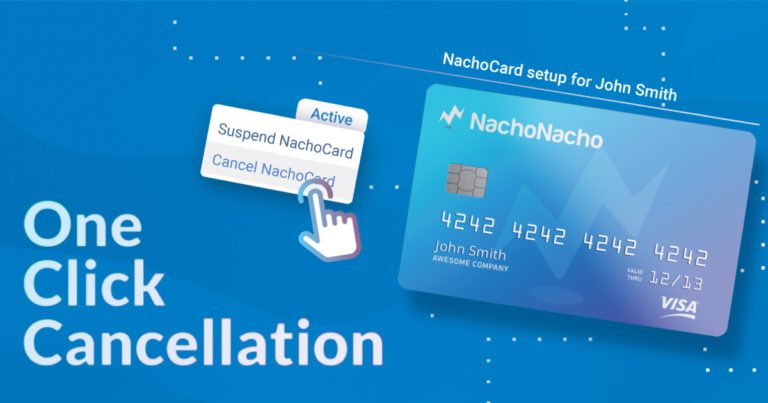The Difference Between SaaS Spend Management, SaaSOps, and SaaS Management Platforms?
How much does your company spend on SaaS every year? If you’re unsure of an exact amount, you aren’t alone. More and more business managers are realizing that their SaaS management isn’t up to par and requires some form of auditing. And who can blame them? Today’s cloud-based applications exist for almost every business need from marketing and sales, to collaboration and project management, to financial tools. Additionally, they come in different sizes, shapes, and functionalities that mold to your business model for maximum productivity.
This all sounds great for optimizing your bottom line – and it certainly is. SaaS marketplaces like NachoNacho offer a multitude of applications to fit any business need. But the sheer quantity of options also leaves businesses vulnerable to overspending.
Why Should You Utilize a SaaS Management Strategy?
Companies have been using software for decades. The rise of SaaS, however, has contributed to a surge in spending on software for companies of all sizes. In fact, Gartner predicts that end-user spending on public cloud services will reach $482 billion in 2022.
SaaS end-users that properly manage their software see benefits like high customization and decision-making ability and improved time management and simplicity. Most importantly, they’re able to monitor spending to avoid wasted capital.
Avoid Overspending
The most obvious reason to employ SaaS management in your business practices is to avoid overspending. Here are some of the top pains you’ll avoid by staying organized with your SaaS spend.
Duplicate & Redundant Apps
It is all too common for large organizations with multiple departments to purchase multiple of the same tool or two different tools that perform the same function. Overbuying on license bundles is an easily avoidable expense with SaaS management.
Forgotten Cancellations
Because most employees use these cloud-based applications without any training or background in IT, they are likely to misunderstand often nuanced renewal periods and cancelation clauses. Whether it be a missed auto-renewal or looked-over cancellation notice, operating multiple subscriptions without a system of organization means that your business could be missing out on opportunities to negotiate better pricing, reduce waste, and update agreements to better fit your immediate and future needs.
Shadow IT
The simplicity with which SaaS can be purchased (anyone with a credit card can do it!) means that the buyer can bypass the usual checks and balances that companies have in place to uphold organizational policies. In fact, a recent study found that 40% of all IT spending at a company happens outside of the IT department. This could lead to unmonitored software titles, and therefore security and compliance issues. Tools like NachoNacho’s virtual credit card help businesses avoid these security risks by providing a centralized hub for monitoring employee purchases.
So, what is a SaaS spend management strategy?
Simply put, it is the organization and control of how much your business is spending on SaaS applications. It means identifying all the platforms that currently exist in your ecosystem, determining what licenses are driving the desired growth metrics, and cleaning out the ones that are not being used efficiently.
What SaaS spend management strategy is right for your business? Read on to learn more.
SaaS Spend Management vs. SaaSOps vs. SaaS Management Platforms
There are different ways that you can manage your SaaS spend, such as classic SaaS spend management, SaaS operations management (SaaSOps), and SaaS management platforms (SMPs). There are plenty of overlaps – for example, some platforms may operate as both SaaSOps and SMPs. There are, however, subtle – and sometimes confusing – technical differences between the three that could determine whether one strategy would better serve your business and growth goals.
Sounding a bit complicated? Don’t worry. We’ve broken down the differences for you.
What is SaaS Spend Management?
In general, SaaS spend management is a derivative of what an SMP or SaaSOps does. Most of the tools that get categorized as SaaS management platforms are very feature-heavy, enterprise-level SaaSOps systems.
In lemans terms, SaaS spend management is a unique service that the more robust SaaSOps and SMPs offer in addition to their other features. And it’s very possible that your company may not need all the bells and whistles that come with SaaS operations SaaS spend management platforms – nor do you need to spend the extra capital.
In theory, SaaS spend management can be done on a spreadsheet (although it wouldn’t be our first recommendation). SaaS spend management focuses on the financial aspects of purchasing, licensing, and renewing or canceling your cloud-based subscriptions. Creating a centralized database gives you more clarity and visibility into your SaaS subscriptions and their utilization. In this way, you will be able to form more comprehensive insights into your software spending in terms of unused licenses or features, overdue invoices, and other payment-related functions.
If you only use a couple of applications, you may have the capability to manage your SaaS spending on your own. For most businesses, however, SaaSOps and SMPs offer a higher degree of service, simplicity, and the resulting peace of mind.
What is a SaaS Management Platform?
A SaaS Management Platform (SMP) is an automized tool that helps businesses manage the purchasing, licensing, onboarding, and renewal management of cloud-based software when a manager can no longer take on the responsibility themselves. SMPs help reduce the risk that can come from unmanaged tools, boost the value of the products businesses are using, and increase user effectiveness.
With the wide variety of choices available today, choosing the right SaaS management platform can be a challenge. Here are some of our top SMP picks.
NachoNacho
Beside’s NachoNacho’s unique virtual credit card for financial management, their SaaS platform is agnostic to operating systems, tech stacks, and software architectures. In other words – no complicated integrations are required. This platform gives you the ability to manage your company’s software subscriptions and purchase new ones at a discount in its marketplace. It’s an all-in-one management tool to satisfy all of your current and future needs.
Blissfully
Blissfully uses vendor management to help you stay up to date with your contracts and keep spending under control. Additionally, they offer a system of records that helps you maintain a “source of truth” for all of your software. With their integration options and workflow automation, performing daily business functions using SaaS becomes simple.
Torii
Torii is another great SMP option that comes with integration and customization options. This management platform is designed with security in mind and gives you an accurate view of your applications and licenses in real-time.
What is SaaSOps?
SaaS operations management is concerned with governing, managing, and securing all of the SaaS applications within an organization. This could mean controlling the security of and who has access to a firm’s SaaS applications – and potentially discovering who has unauthorized access. Similarly, auditing SaaS applications for compliance (e.g., HIPAA or SOC 2) falls under the category of SaaSOps.
Below are some examples of SaaSOps tools that could satisfy your SaaS management needs.
Zluri
With features like automated onboarding and offboarding, smart application discovery, easy renewable monitoring, cost optimization, and more, Zluri helps companies accelerate innovation by offering tools to simplify their SaaS stack.
Productiv
Productiv is a SaaSOps platform that can help your company accelerate operational velocity by automating workflows based on app usage, increase employee engagement by personalizing digital employee experiences, and enable proactive governance by increasing overall visibility.
Zylo
Zylo uses industry-leading technology to provide companies with features like complete SaaS visibility, optimized SaaS licensing, and the ability to take control of renewals while rationalizing SaaS portfolios.
Summary
SaaS applications have grown in popularity for a reason. They’re easy to set up, easier to manage, and update themselves regularly. Left unchecked, however, these features that offer such convenience can also lead to problems.
It is estimated that the average medium-sized company (about 100 to 250 employees) uses 150 different SaaS applications. With such a high number of software components, it’s no wonder that it can become an IT nightmare to track and manage the complete profile of SaaS subscriptions and spending. There is no question that, to operate efficiently, your business should employ some form of SaaS management. Though there are distinct differences between general SaaS spend management, SaaSOps, and SaaS management platforms, there is also often overlap. It’s common to see the term “SaaS management” used to describe SaaS spend management, and vice versa. As long as you understand what your specific business needs are, however, you’ll always be able to find the appropriate tools to grow – and we’ll be there to help you!







